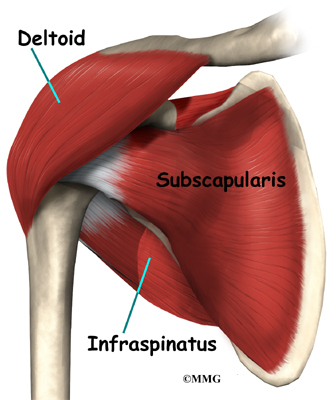
For many avid weight lifters, shoulder injuries don’t happen overnight. We know countless people who’ve lifted for years, sometimes ignoring minor shoulder pain, and then — pop! — they’re finished. Kaput. But what they perceive as a sudden injury is actually the result of years of overuse and poor form. Avoid the common mistakes to keep your shoulders strong and healthy.
Exaggerating the movementIf the instructions say lift the dumbbell “to shoulder height,” don’t lift the weight up to the ceiling, because lifting your arm to this unnatural angle adds undue stress to the joint with little advantage for increasing muscle tone. In other words, the risk of injury from lifting higher outweighs any minimal benefit of getting slightly stronger by increasing the size of the movement.
Arching your backWhen you perform shoulder exercises while sitting on a vertical bench, make sure that you only have a slight gap between the small of your back and the backrest. Yes, arching your back gives you more leverage to lift heavier weights, but arching also cheats the muscles that you’re targeting and puts your lower back in a vulnerable position — causing injury.
Rocking back and forthWhen you perform shoulder exercises while standing, relax your knees and maintain a tall posture. Many people lock their knees and lean back, a posture that your lower back muscles don’t appreciate. If you’re moving any body parts other than your arms, you aren’t targeting your shoulder muscles, and you’re using too much weight.
Performing behind-the-neck shoulder exercisesYou’re likely to see lifters press a barbell overhead and then lower it behind the neck rather than in front. Some shoulder machines also involve behindthe-neck movements. Stay away from these exercises! They require a severe backward rotation of your arm, placing your shoulder and rotator cuff muscles in a weakened and precarious position. The movement also compresses the top of your arm bone into your shoulder socket, which tends to grind the bones and place your rotators under a great deal of additional stress. Always keep in mind that the benefit of any exercise should outweigh the risk. Suzanne, who knows better than to perform these exercises, nevertheless did a set of behind-the-neck shoulder presses while training for a weight lifting competition. The next day she couldn’t reach her left arm backward without wincing in agony — nor could she press a measly 5-pound dumbbell overhead without severe pain. Only after seven months of rest and rehab exercises did her rotator cuff injury begin to heal. Suzanne learned her lesson the hard way and now cringes when she sees people at her gym performing the very exercise that ruined her workouts for months.
 The dumbbell shoulder press targets the top and center of your shoulder muscles. This exercise also works your upper back and triceps. Use caution if you have lower back, neck, or elbow problems.
The dumbbell shoulder press targets the top and center of your shoulder muscles. This exercise also works your upper back and triceps. Use caution if you have lower back, neck, or elbow problems.







